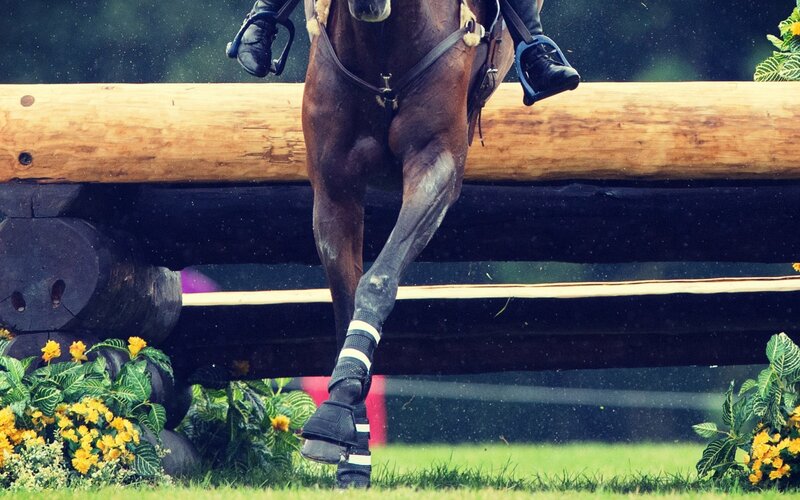
Developing the fifth leg
Jonathan Chapman shares some wise words and training tips for safe fence jumping.
In eventing, the rider is responsible for line (direction) and speed (engine) and their own balance (position). The horse is responsible for looking, assessing and acting. This perfect scenario takes practise and patience, and mistakes will happen, but a lot can be achieved at home.
In eventing, the rider is responsible for line (direction) and speed (engine) and their own balance (position). The horse is responsible for looking, assessing and acting. This perfect scenario takes practise and patience, and mistakes will happen, but a lot can be achieved at home.
Ride over undulating terrain in all the gaits, up and (importantly) down hills, steps, banks, kerbs etc.
Often when I am coaching cross country I will ask a rider to canter down a slope to a fence – the colour drains from their face and there is a definite reluctance to get going. I ask the rider to carry out the movement allowing the horse to stay in self carriage. They should monitor the balance and carriage, correct it when it’s wrong and allow the horse to balance itself again.
Practise jumping down grids with very light – or, better, no – contact in the rein.
It will not only improve the horse’s self-carriage, balance and jump, but also the rider’s balance and carriage.
Loose schooling correctly carried out improves the horse’s focus, decision making and technique.
Minimal interference during ridden jump training is educational for the horse. Even when you know you might not be on a perfect spot, let it happen, and let the horse learn from that. If the horse has an uncomfortable jump then next time he should pay more attention and adjust himself.
Try putting logs or sleepers across stable entrances to make the horse step in and out of his stable, in gateways into the field or on tracks.
Several physiotherapists advise putting two or three sleepers on their sides in the horse-walker to encourage joint flexion when recovering from injury. These would encourage the horse to look, stretch down and organise their stride pattern to step over them neatly.
Take every opportunity to ride through water.
Where possible, trot and canter through water so the horse gets used to the water splashing on his tummy and face and learns to cope with the drag effect and consequent re-adjustments to his gait needed for re-balancing.
Jump on varying distances.
This is something Lucinda Green is passionate about, to the point that if you attend a jumping session with her she may not even measure the distance between the fences. She may just ask you to approach at an appropriate speed and “have a go”. It gives the rider an idea of how adjustable a horse’s canter stride is if it chooses to alter it.
Practise schooling on sloping ground.
You and your horse will find it difficult and uncomfortable to start with but, with time, balance will improve. In reality, you need this for riding in grass dressage arenas, not just for jumping, especially at the lower levels.
The above is just a sample of simple things that you can do and practise to improve your horse’s ‘natural’ balance, co-ordination, agility and focus. Whichever methods suit your particular situation should be carried out after discussion with your coach/trainer/mentor – they should contribute to a safer conveyance.
Find training in your region with a BE Accredited Coach HERE.
